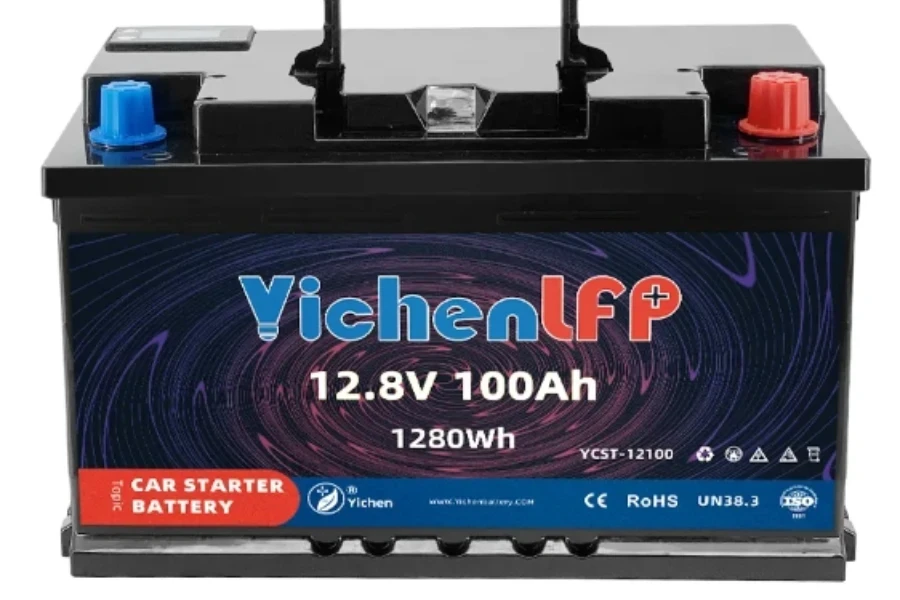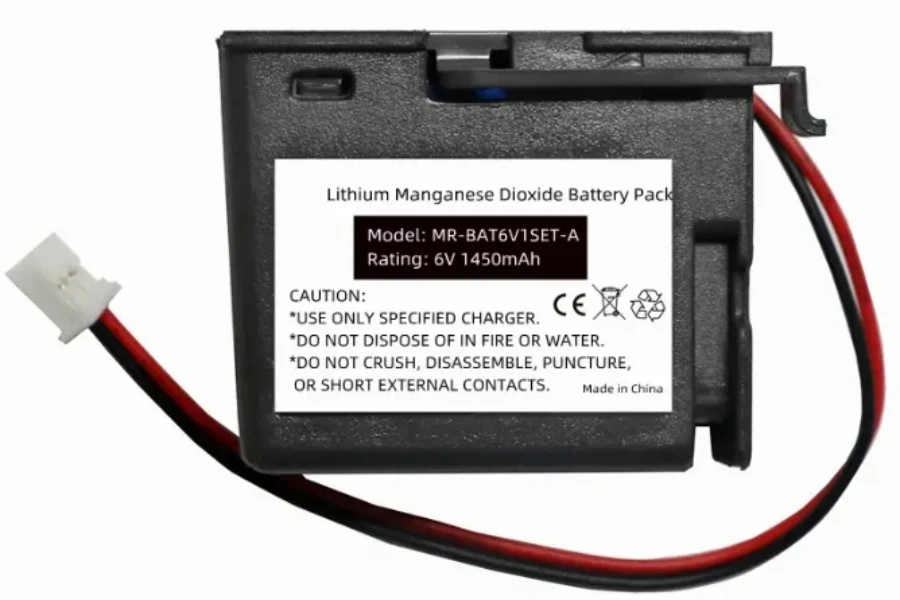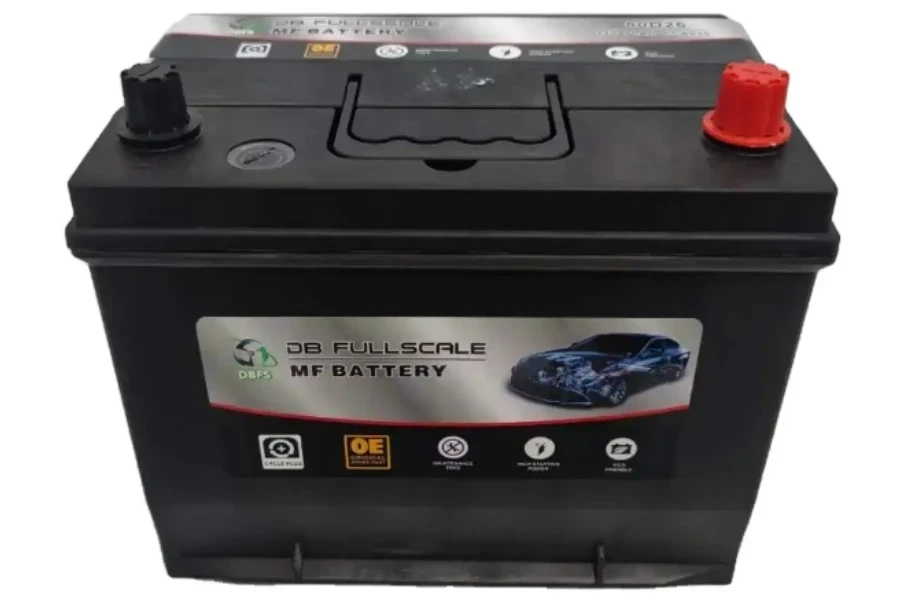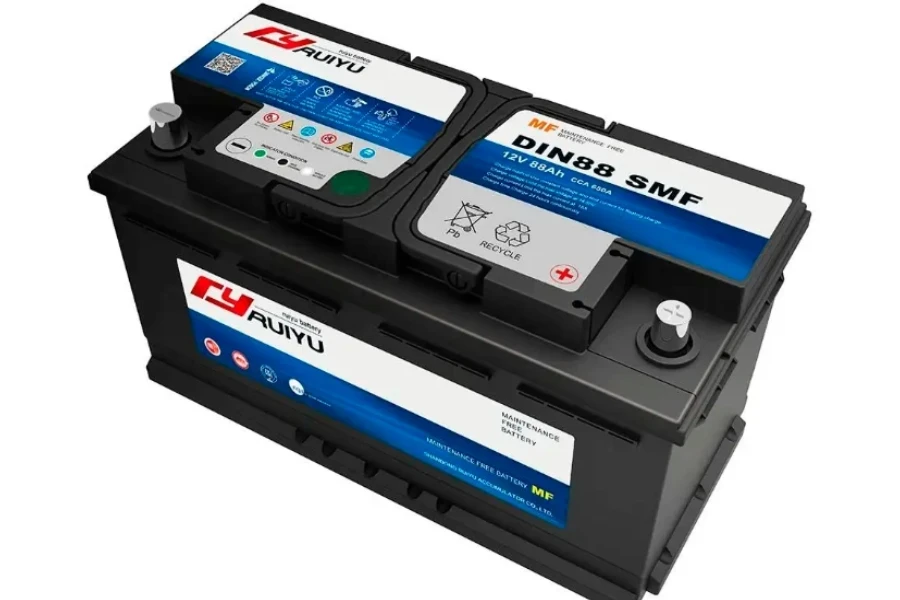LMO batteries are a type of lithium-ion battery that uses lithium manganese oxide as the cathode material. This battery is characterized by high charging speed and thermal stability, and excels in application scenarios that require fast charging and discharging, such as power tools and certain electric vehicles. In addition, its relatively low cost makes it ideal for cost-sensitive applications.
This article will give a brief overview of LMO battery batteries, and then it will highlight the key factors you should consider when selecting one in 2024.
Table of Contents
What are LMO batteries
Composition
Classification
Application scenarios
When should you choose this battery
Technology trends
The bottom line
What are LMO batteries
Lithium manganese oxide (LMO) batteries, an important type of lithium-ion battery, have demonstrated remarkable performance within several applications thanks to their lithium manganese oxide (LiMn2O4) cathode material.
The core of this battery technology lies in the spinel structure of the cathode material, which not only confers good electrochemical properties, such as high operating voltage and good cycling stability, but also provides relatively high specific energy.
The main advantages of LMO batteries lie in their cost-effectiveness, high safety, and good power density, which make them particularly suitable for use in areas such as power tools, electric vehicles, and portable electronic devices, among others.
However, there are some challenges associated with these batteries, including their susceptibility to capacity degradation at high temperatures and their low energy density compared to other lithium-ion batteries. In the face of these challenges, the development of LMO battery technology has not stood still.
In order to improve performance and extend life, R&D has adopted various strategies, such as combining LMO batteries with other types of lithium-ion battery materials (e.g., lithium-nickel-cobalt-manganese-oxide (NMC)), to capitalize on the advantages of each material.
This hybridization strategy not only increases the energy density of the battery but also helps to improve overall battery performance and cycle life while maintaining cost-effectiveness. Today, LMO batteries are an indispensable energy solution for electric transportation (including electric bicycles, electric motorcycles, and some electric vehicles), portable electronics, cordless power tools, and home and commercial energy storage systems.
The breadth of these applications is a testament to the versatility of LMO battery technology and its importance in current and future energy solutions. With further advances in materials science and battery technology, it is foreseeable that LMO batteries will continue to find a better balance between energy efficiency, safety, and cost-effectiveness for a wider range of applications.
Composition
Cathode material
Lithium-manganese oxide (LiMn2O4): The cathode material is the most central part of LMO batteries and uses lithium-manganese oxide with a spinel structure. This material is widely used because of its good electrochemical stability, high operating voltage, and relatively low cost. The spinel structure facilitates the rapid embedding and dislodging of lithium ions, supporting high power output and good cycling performance.
Anode material
Graphite: Graphite or other forms of carbon materials are commonly used for negative electrodes. Graphite has a layered structure that provides a stable storage space for lithium ions, supporting efficient performance and long-term stability during charging and discharging.
Electrolyte
Lithium salts dissolved in an organic solvent: The electrolyte is the ion transport medium inside the battery, which contains an organic solvent with lithium salts (e.g., LiPF6) dissolved in it. The main function of the electrolyte is to conduct lithium ions between the positive and negative electrodes, enabling the battery to carry out electrochemical reactions during charging and discharging.
Diaphragm (separator)
Porous polymer membrane: The Separator is a delicate porous polymer membrane located between the positive and negative electrodes. Its function is to physically separate the positive and negative electrodes, preventing short circuits while allowing lithium ions to pass through freely to support the charging and discharging process of the battery.
Casing and packaging
Metal or plastic casing: used to protect the internal components and ensure the physical stability and safety of the battery. The material and design of the casing should also take into account the battery’s heat dissipation needs.
Classification

LMO batteries, as a type of lithium-ion battery, are mainly classified by the different combinations and modifications of lithium manganese oxides in the cathode materials. These classifications reflect different directions for optimizing the performance of LMO batteries, including improving their energy density, cycle stability, temperature performance, and safety. The following are some of the main classifications of LMO batteries:
Pure phase LMO batteries
This type of battery uses pure lithium manganese oxide as the cathode material with a spinel structure. Pure-phase LMO batteries are simple and low-cost, but they are prone to capacity degradation at high temperatures, limiting their range of applications.
Dopant-modified LMO batteries
The electrochemical properties of LMO materials are improved by doping other elements (e.g., nickel, cobalt, iron, etc.) into them, especially to enhance their cycling stability and temperature performance. This modification can effectively inhibit the material structure damage caused by repeated embedding and dislodging of lithium ions during the cycling process, thus prolonging the battery life.
Surface-modified LMO batteries
The structural stability and electrochemical performance of LMO particles can be improved by coating the surface of LMO particles with other materials (e.g., oxides, phosphates, etc.). Surface modification not only improves the safety of the battery but also improves its performance under high temperatures to a certain extent.
Composite anode LMO batteries
LMO materials are composed with other types of cathode materials, such as LiNiMnCoO2 (NMC) or LiFePO4 (LFP), to combine the advantages of different materials. This composite strategy aims to increase the overall energy density of the battery, improve its safety performance, and optimize its temperature performance.
Application scenarios

Electric transportation
Electric vehicles (EVs): LMO batteries are used in the power battery systems of some electric vehicles due to their high-power density and good safety performance.
Electric bicycles and electric motorcycles: In these applications, LMO batteries provide the required high-power output and suitable range while maintaining cost-effectiveness.
Portable electronic devices
Cell phones and laptops: Although LMO batteries do not have the same energy density as some other types of lithium-ion batteries (e.g., lithium cobalt oxide batteries), they are still favored for their high-power output and good cost-effectiveness in specific devices.
Digital cameras and portable media players: These devices require a reliable power source to support high-power operation, and LMO batteries are widely used because of their flexible application.
Energy storage systems
Home and commercial energy storage systems (ESS): LMO batteries are becoming more and more common in energy storage systems, especially in applications that require high power and fast response, such as the utilization of peak and valley tariff differentials and storage of renewable energy generation (solar, wind).
Emergency and standby power systems: LMO batteries also show their advantages in emergency and standby power systems that require high reliability and immediate power output.
When should you choose this battery

Selecting an LMO battery is appropriate for specific scenarios where the specific benefits of the battery meet the needs of the application. Selecting an LMO battery may be the best choice in the following situations:
Requires high power output
LMO batteries offer high power density and are suitable for applications that require fast charging and discharging capabilities, such as power tools, electric bicycles, and electric motorcycles. If the application scenario requires a large amount of energy to be released in a short period of time, LMO batteries are an excellent choice.
Cost-sensitive projects
Compared to other types of lithium-ion batteries, LMO batteries are usually less costly. For projects with limited budgets or looking for cost-effectiveness, such as certain types of electric vehicles and portable consumer electronics, LMO batteries can provide an affordable solution.
Security factor
While all types of lithium-ion batteries are designed with stringent safety measures, LMO batteries offer better thermal stability and safety due to their chemical structure. In applications where safety is a high priority, such as large battery storage systems, LMO batteries may be a safer choice.
Large number of batteries required for a short period of time
Due to the relative maturity and simplicity of the manufacturing process for LMO batteries, they can be mass-produced relatively quickly. In projects where a large number of batteries need to be deployed in a short period of time, such as the production of certain scaled electric vehicles, LMO batteries can quickly meet the large demand.
Low battery life requirements
While the cycle life of LMO batteries may not be as long as that of some other types of lithium-ion batteries, the balance of performance and cost offered by LMO batteries is still attractive if the application scenario is amenable to a moderate number of cycles.
Technology trends

LMO batteries are expected to focus on improving performance, expanding applications, and improving safety and environmental sustainability in future technology trends. Below are a few key directions of future technology trends for LMO batteries:
Material innovation
Doping and alloying: Improving the energy density and stability of batteries by doping other elements (e.g., nickel, cobalt, aluminum, etc.) into LMO materials. These innovations help to improve the cycle life and operating temperature range of the battery.
Surface modification: New surface coating technologies are developed to improve the structural stability and corrosion resistance of LMO batteries, which in turn enhances their performance in extreme environments.
Structure optimization
Microstructure control: Improve the diffusion efficiency of lithium ions by optimizing the microstructure of LMO materials, such as particle size and shape, so as to improve the charging and discharging performance of the battery.
Multi-material composite: Composite LMO with other types of cathode materials (e.g., NMC, LFP) in order to combine the advantages of each material to achieve higher energy density and better cycle performance.
Safety improvement
Thermal stability improvement: Develop more stable electrolyte and diaphragm materials to improve the safety and stability of LMO batteries at high temperatures.
Built-in safety mechanisms: Develop new battery designs, such as built-in overcharge protection and thermal management systems, to further improve safety during use.
Expansion of application areas
Energy storage systems (ESS): With the increase in the use of renewable energy sources, the application of LMO batteries in large-scale energy storage systems is expected to grow further, especially where high power density and good safety are required.
Smart grid and home energy storage: The application of LMO batteries in smart grid and home energy storage solutions will increase with technological advances to support more efficient energy utilization and better grid stability.
The bottom line
LMO batteries have been widely adopted in a variety of applications due to their high power density, relatively low cost, and good safety performance. LMO batteries are particularly suitable for applications requiring high power output and cost-effectiveness, such as power tools, electric transportation, and certain portable electronic products.
In the future, with the advancement and optimization of technology, LMO batteries are expected to achieve greater breakthroughs in energy density, cycle life, and environmental adaptability, further expanding their application scope.
Finally, if you are interested in purchasing a LMO battery for home or business use, you can visit this link.



